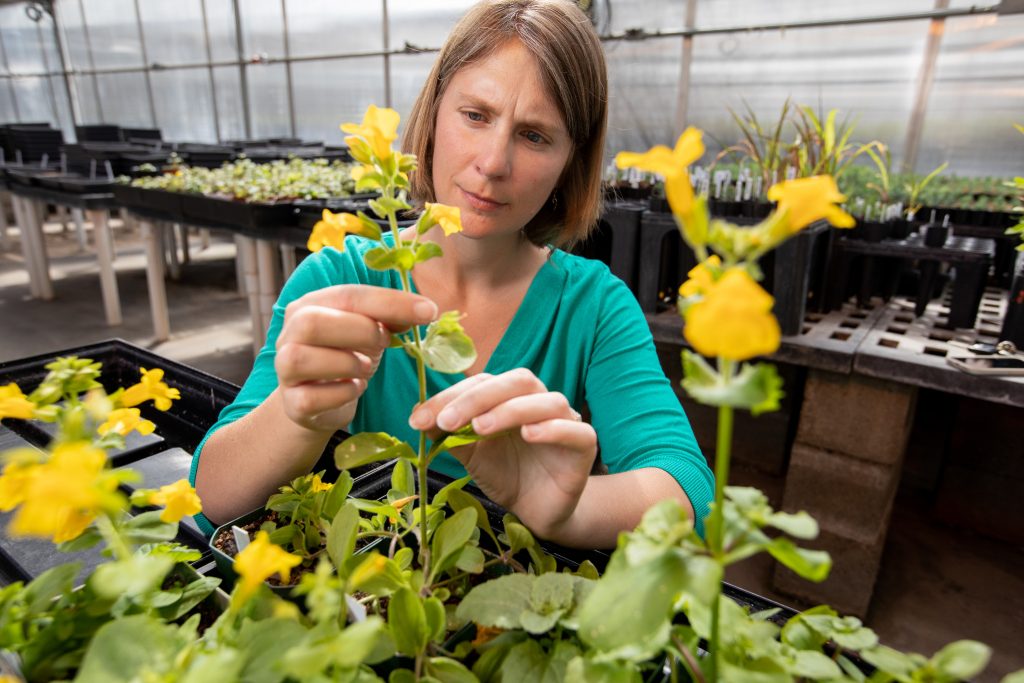July 11, 2019
Evolutionary biologists have long puzzled over how new traits emerge in nature, largely because much of the evolutionary information available is from the distant past. To learn more about how genes influence evolution, these researchers study organism phenotypes—the observable characteristics of an organism that are influenced by genetics and environment—and how they change.
Identifying and studying novel traits, such as new patterns seen in turtle shells, butterflies and flowers, may help biologists solve one of the most challenging problems in evolutionary biology: how these traits originate and evolve. Decoding that mystery could improve the quality of human life—for example, by helping researchers understand the evolutionary histories of disease-causing genes in order to control hereditary diseases.
Liza Holeski, an associate professor of biology in NAU’s College of the Environment, Forestry, and Natural Sciences, recently received a $106,000 grant from the National Institutes of Health to study a distinct pigmentation pattern that evolved very recently among a wild population of crimson monkeyflowers (Mimulus verbenaceus). Holeski’s study is part of a larger five-year project spearheaded by principal investigator Yaowu Yuan, an assistant professor and evolutionary developmental geneticist at the University of Connecticut.
Working with Ph.D. and undergraduate students, Holeski will conduct experiments to provide a detailed view of how the new trait, a specific stripe pattern that appears on the flower’s leaf, developed and evolved. The team hopes to identify the genes that underlie the phenotype and learn how the plant’s genetics and the environment interacted to produce the trait.
“Most of the work will be done in the field, but we will propagate plants in the greenhouse by moving pollen from one plant onto the stigma of another to fertilize according to a specific breeding design,” Holeski said. “In the lab, we’ll enter data, conduct statistical analysis and identify any insect herbivores found in the field.”
Monkeyflowers ideal for studying phenotypes, genetics
Monkeyflowers are indigenous to the western and southwestern United States and northern Mexico, but the particular trait Holeski is studying appears in crimson monkeyflowers growing in only two canyons in northern Arizona.
“The trait we’re examining evolved relatively recently, which allows us to characterize not only the genetic and developmental pathways underlying the trait, but also the evolutionary processes that lead to its presence or absence in different populations,” Holeski said.
Discerning the factors that drive an initial adaption requires rigorous investigation, which can’t be performed on most organisms. Monkeyflowers are ideal for studying the link between phenotypes and genetics because they have short generation spans and small genomes, allowing researchers to manipulate the genes and observe the results in a relatively short time.
”A wealth of previously developed genomic resources and tools are available that can help researchers map the trait,” Holeski said. “And learning more about how traits develop, no matter how simple or unimportant they may seem, can contribute to the overall understanding of how natural selection occurs.
“Characterizing gene regulatory networks in model organisms has led and will continue to lead to greater understanding of developmental processes in other organisms, including humans. We anticipate that these studies will, for the first time, provide a detailed view of the genetic and developmental mechanisms and the evolutionary process driving them in nature.”
Holeski, who joined NAU in 2013, focuses on plant evolution, ecology and genetics to understand how herbivores and environmental factors—such as temperature, water availability and growing season length—create trait selection pressures in plants.

Kerry Bennett and Amy K. Phillips
Office of the Vice President for Research



